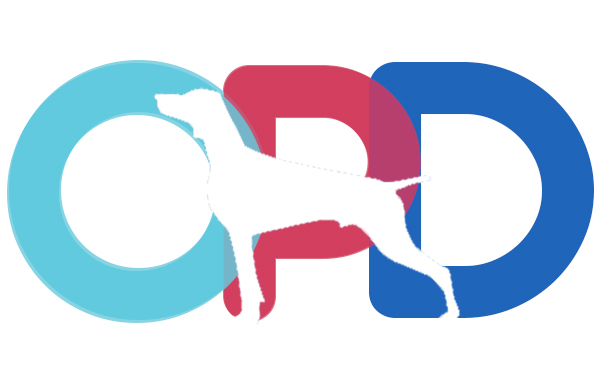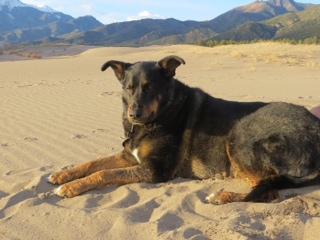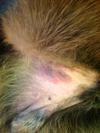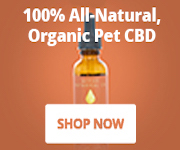by Leslie
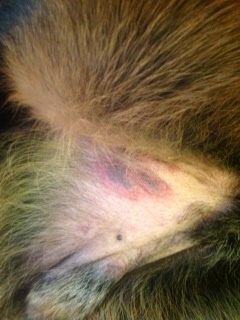
My 9 year old dog has been getting red bumps around his crotch, mostly in the ‘armpit’ between his hind legs. The bumps grow in size and turn purple with redness around them, then fade away.
It is in a spot where he can’t really scratch, but still it doesn’t really seem to bother him. This has been going on for a month or so.
We thought it may be a food allergy as he has always liked popcorn, and one day he quit wanting to eat it. It has been 2-3 weeks since he’s had popcorn, and they are still there.
We switched foods recently, not brands, just from the lamb version of taste of the wild to salmon, so we switched back to lamb within the last week.
Could this also be an allergy from something outside? Perhaps it’s not an allergy at all?
It is probably important to note that we have another dog who does not have this (so I don’t think it’s contagious).
Also, our dog has a heart murmur, which he’s had since he was a pup. When he was one he had surgery and they put a balloon catheter in is heart valve. He was on beta blockers until he was about 4 or 5, but has not taken meds since. This may or may not have a connection to that.
Also, he seems to have a few other dry spots on his butt where he is losing hair. We guessed those might be hot spots?
Is there any over the counter cream or medication that could help him? We have been keeping it clean. Or anything more we can do to treat them?
Comments for Purple Spots on Dog’s Abdomen | ||
| ||
Do you believe in holistic pet care? If so, please tell your friends about us. Thank you for supporting our efforts!
Also see…
- Back to Dog Health Problems Symptoms / Dog Illness Signs Symptoms / Natural Dog Remedies
- Back to 10 Best Dog Food Options / Dog Food Ratings / Buy Dog Food Online
- Back to Conventional vs. Holistic Veterinarians
- Back to Organic Dog Supplies Online
- Back to Pet Friendly Airlines / Pet Friendly Travel
- Back to Organic Pet Digest Natural Dog Care Home Page
